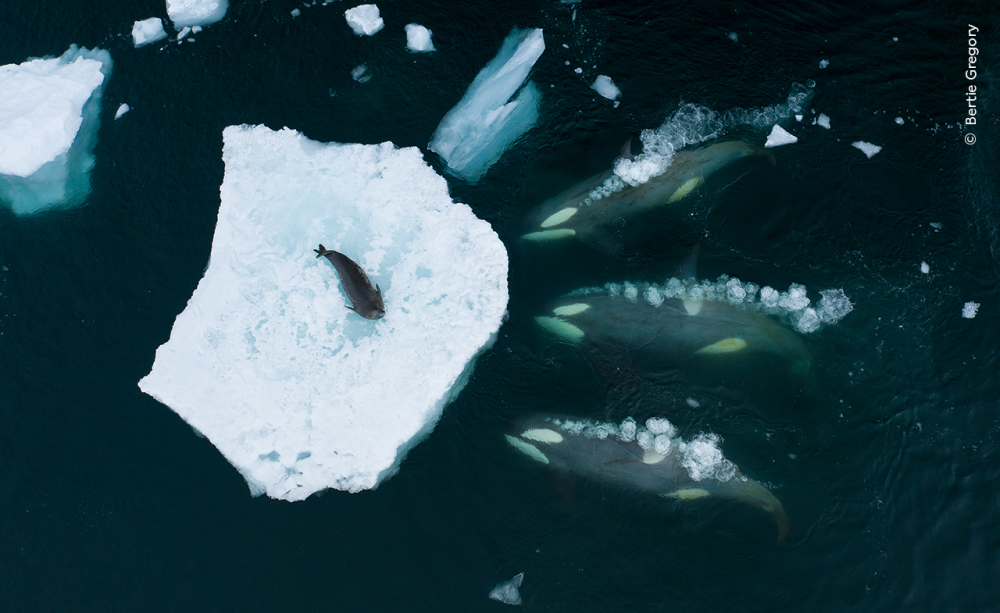A “living fossil” that’s persisted on Earth for over 445 million years earned Laurent Ballesta the title of Wildlife Photographer Of The Year for 2023. The Grand Title winner submitted the mesmerizing shot of a golden horseshoe crab as part of a portfolio that took two weeks of diving for six hours a day to shoot.
“These animals are well known because, in some parts of the world, they come out of the water, thousands of them, to spawn on the beaches,” Ballesta told IFLScience. “But they’re not often photographed in the water because normally the places where they like to live, it’s muddy waters with zero visibility. We were lucky to find this place where there is enough visibility[…] that was not deep, for once.”
Laurent has a lot of experience with deep dives, having scooped Wildlife Photographer Of The Year back in 2021 for his ghostly image of groupers spawning – an event that takes place in less than a second within a single window of the year, meanwhile, the horseshoe crab mates for a cool 15 days.
“Everything was easy, except that you need to dive day in, day out,” Ballesta continued. “The only pressure was to keep everybody motivated and have the discipline to go back every day and night because you don’t find them all the time, but when you do find them, then it’s easy.”
For over 445 million years, horseshoe crabs have been scuttling across the ocean floor, but in the modern era, they are under threat due to the unique medicinal value of their blue blood. It’s been used in vaccines, including those deployed to manage COVID-19, but there are now recombinants, made from synthetic proteins, that can do the same job. It’s the view of the WPOTY judging panel that shining a light on these magnificent creatures could pivot companies away from the precious resource of their blood and toward more sustainable alternatives.
Whales Making Waves.
Image credit: © Bertie Gregory / Wildlife Photographer of the Year
Another familiar face at the 2023 competition was presenter and wildlife photographer Bertie Gregory. Having just launched his latest National Geographic series on Disney+, Animals Up Close (which includes incredible footage of a puma hunting at night), Gregory was awarded the winner of the Behaviour: Mammals category.
“Every time I think we’ve seen all the hunting strategies these killer whales have, they do something completely new,” Gregory told IFLScience. “I think what’s amazing about the behaviour is that there are a lot of hunting strategies animals use that are instinctive, whereas this is more artful. They’re not born knowing how to do it, they train like a professional athlete over decades learning how to do it from their parents – from their mum – training to be able to do it.”
“You’ll see them when they’re hunting, they’re all spread out over maybe a kilometre, all checking the ice independently of each other by spy hopping and checking for seals. As soon as one finds it, it drops down and then they all disappear, and it’s because that one’s obviously letting out a call to say ‘I’ve found one’.”
“They all come over, and then before they start wave washing, there’s this period where they’re all looking and it’s very slow and methodical, and clearly, they’re chatting about how they’re going to do it, which angle to come from. Everyone always wants to know how smart wild animals are and, to me, that’s [the] most incredible display of animal intelligence.”
See more of the stunning images from the 2023 Wildlife Photographer Competition below, or get your tickets now to see the exhibition in person at London’s Natural History Museum.
Last breath of autumn by Agorastos Papatsanis, Greece
Winner, Plants and Fungi
Last Breath Of Autumn.
Image credit: © Agorastos Papatsanis / Wildlife Photographer of the Year
Agorastos Papatsanis used a photographic umbrella and plastic bag to protect his kit while snapping this mystical photograph of a parasol mushroom releasing billions of spores from the gills under its cap. Usually unseen, they travel in air currents and some will land where there is moisture and food, enabling them to grow and establish their own networks under the forest floor.
The tadpole banquet by Juan Jesús Gonzalez Ahumada, Spain
Winner, Behaviour: Amphibians and Reptiles
The Tadpole Banquet.
Image credit: © Juan Jesús Gonzalez Ahumada / Wildlife Photographer of the Year
A dead fledgling sparrow becomes a feast for an unexpected group of scavengers in Juan Jesús Gonzalez Ahumada’s winning shot. Common toad tadpoles will eat anything from algae to vegetation and tiny swimming invertebrates. The bigger they get, so too do their appetites, and large carnivorous tadpoles will gladly take full advantage of a banquet such as this one.
Lights fantastic by Sriram Murali, India
Winner, Behaviour: Invertebrates
Lights Fantastic.
Image credit: © Sriram Murali / Wildlife Photographer of the Year
Fireflies trip the light fantastic in this illuminating shot by Sriram Murali that showcases the night sky of the Anamalai Tiger Reserve in Tamil Nadu, India. Murali combined 50 19-second exposures to capture the bioluminescent flashes produced by these small beetles over 16 minutes.
Wildlife Photographer of the Year is developed and produced by the Natural History Museum, London, and is open from October 13, 2023 until June 30, 2024.
Source Link: Blue-Blooded Living Fossil Scoops Wildlife Photographer Of The Year Award
